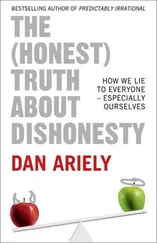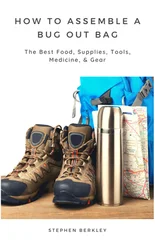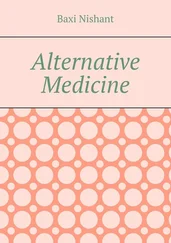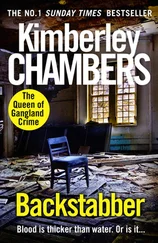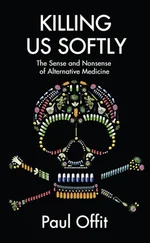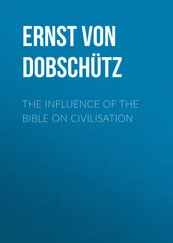But who was right — the most eminent doctors in the land who had done their best to save Washington, or the maverick medics who saw bloodletting as a crazy and dangerous legacy of Ancient Greece?
Coincidentally, on the day that Washington died, 14 December 1799, there was effectively a legal judgement on whether bloodletting was harming or healing patients. The judgement arose as the result of an article written by the renowned English journalist William Cobbett, who was living in Philadelphia and who had taken an interest in the activities of a physician by the name of Dr Benjamin Rush, America’s most vociferous and famous advocate of bloodletting.
Dr Rush was admired throughout America for his brilliant medical, scientific and political career. He had written eighty-five significant publications, including the first American chemistry textbook; he had been surgeon general of the Continental Army; and, most important of all, he had been a signatory to the Declaration of Independence. Perhaps his achievements were to be expected, bearing in mind that he graduated at the age of just fourteen from the College of New Jersey, which later became Princeton University.
Rush practised at the Pennsylvania Hospital in Philadelphia and taught at its medical school, which was responsible for training three-quarters of American doctors during his tenure. He was so respected that he was known as ‘the Pennsylvania Hippocrates’ and is still the only physician to have had a statue erected in his honour in Washington DC by the American Medical Association. His prolific career had allowed him to persuade an entire generation of doctors of the benefits of bloodletting, including the three doctors who had attended General Washington. For Rush had served with Dr Craik in the Revolutionary War, he had studied medicine with Dr Brown in Edinburgh, and he had taught Dr Dick in Pennsylvania.
Dr Rush certainly practised what he preached. His best-documented bloodletting sprees took place during the Philadelphia yellow fever epidemics of 1794 and 1797. He sometimes bled 100 patients in a single day, which meant that his clinic had the stench of stale blood and attracted swarms of flies. However, William Cobbett, who had a particular interest in reporting on medical scandals, was convinced that Rush was inadvertently killing many of his patients. Cobbett began examining the local bills of mortality and, sure enough, noticed an increase in death rates after Rush’s colleagues followed his recommendations for bloodletting. This prompted him to declare that Rush’s methods had ‘contributed to the depopulation of the Earth’.
Dr Rush’s response to this allegation of malpractice was to sue Cobbett for libel in Philadelphia in 1797. Delays and distractions meant that the case dragged on for over two years, but by the end of 1799 the jury was ready to make a decision. The key issue was whether Cobbett was correct in claiming that Rush was killing his patients through bloodletting, or whether his accusation was unfounded and malicious. While Cobbett could point to the bills of mortality to back up his case, this was hardly a rigorous analysis of the impact of bloodletting. Moreover, everything else was stacked against him.
For example, the trial called just three witnesses, who were all doctors sympathetic to Dr Rush’s approach to medicine. Also, the case was argued by seven lawyers, which suggests that powers of persuasion were more influential than evidence. Rush, with his wealth and reputation, had the best lawyers in town arguing his case, so Cobbett was always fighting an uphill battle. On top of all this, the jury was probably also swayed by the fact that Cobbett was not a doctor, whereas Rush was one of the fathers of American medicine, so it would have seemed natural to back Rush’s claim.
Not surprisingly, Rush won the case. Cobbett was ordered to pay $5,000 to Rush in compensation, which was the largest award ever paid out in Pennsylvania. So, at exactly the same time that George Washington was dying after a series of bloodletting procedures, a court was deciding that it was a perfectly satisfactory medical treatment.
We cannot, however, rely on an eighteenth-century court to decide whether or not the medical benefits of bloodletting outweigh any damaging side-effects. After all, the judgement was probably heavily biased by all the factors already mentioned. It is also worth remembering that Cobbett was a foreigner, whereas Rush was a national hero, so a judgement against Rush was almost unthinkable.
In order to decide the true value of bloodletting, the medical profession would require a more rigorous procedure, something even less biased than the fairest court imaginable. In fact, while Rush and Cobbett were debating medical matters in a court of law, they were unaware that exactly the right sort of procedure for establishing the truth about medical matters had already been discovered on the other side of the Atlantic and was being used to great effect. Initially it was used to test a radically new treatment for a disease that afflicted only sailors, but it would soon be used to evaluate blood letting, and in time this approach would be brought to bear on a whole range of medical interventions, including alternative therapies.
Scurvy, limeys and the blood test
In June 1744 a hero of the British navy named Commander George Anson returned home having completed a circumnavigation of the world that had taken almost four years. Along the way, Anson had fought and captured the Spanish galleon Covadonga , including its 1,313,843 pieces of eight and 35,682 ounces of virgin silver, the most valuable prize in England’s decade of fighting against Spain. When Anson and his men paraded through London, his booty accompanied him in thirty-two wagons filled with bullion. Anson had, however, paid a high price for these spoils of war. His crew had been repeatedly struck by a disease known as scurvy , which had killed more than two out of three of his sailors. To put this into context, while only four men had been killed during Anson’s naval battles, over 1,000 had succumbed to scurvy.
Scurvy had been a constant curse ever since ships had set sail on voyages lasting for more than just a few weeks. The first recorded case of naval scurvy was in 1497 as Vasco da Gama rounded the Cape of Good Hope, and thereafter the incidences increased as emboldened captains sailed further across the globe. The English surgeon William Clowes, who had served in Queen Elizabeth’s fleet, gave a detailed description of the horrendous symptoms that would eventually kill two million sailors:
Their gums were rotten even to the very roots of their very teeth, and their cheeks hard and swollen, the teeth were loose neere ready to fall out…their breath a filthy savour. The legs were feeble and so weak, that they were full of aches and paines, with many blewish and reddish staines or spots, some broad and some small like flea-biting.
All this makes sense from a modern point of view, because we know that scurvy is the result of vitamin C deficiency. The human body uses vitamin C to produce collagen, which glues together the body’s muscles, blood vessels and other structures, and so helps to repair cuts and bruises. Hence, a lack of vitamin C results in bleeding and the decay of cartilage, ligaments, tendons, bone, skin, gums and teeth. In short, a scurvy patient disintegrates gradually and dies painfully.
The term ‘vitamin’ describes an organic nutrient that is vital for survival, but which the body cannot produce itself; so it has to be supplied through food. We typically obtain our vitamin C from fruit, something that was sadly lacking from the average sailor’s diet. Instead, sailors ate biscuits, salted meat, dried fish, all of which were devoid of vitamin C and likely to be riddled with weevils. In fact, infestation was generally considered to be a good sign, because the weevils would abandon the meat only when it became dangerously rotten and truly inedible.
Читать дальше


